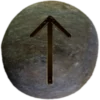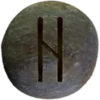Last Updated on October 10, 2024
Table of Contents

Garmr, also spelled Garm, is a monstrous wolf-like creature who guards the gates of Helheim. Helheim is the realm of the dead, ruled by the goddess Hel. Garmr ensures that the dead remain in the underworld and prevents intruders from entering. His appearance resembles that of a large, blood-stained wolf or hound, and he is known for his ferocity and loyalty to his duty.
Garmr’s role becomes crucial during Ragnarök, the final battle that brings the end of the world. During this apocalyptic event, he breaks free from his chains, signaling that the time of the gods and men has come to an end. He engages in a deadly battle with the god Týr, where both are destined to fall. This final confrontation is a key moment in the prophecy of Ragnarök.
While Garmr is often compared to Fenrir, another giant wolf from the same sagas, they serve different purposes. Fenrir’s destiny is to devour Odin, the Allfather, while Garmr’s role focuses on guarding Helheim and confronting Týr. Despite their similarities, Garmr represents a boundary between life and death, whereas Fenrir embodies chaos and destruction.
Elder Futhark Rune Associated with Garmr
The rune most commonly associated with Garmr is Tiwaz, the rune of Týr. This connection stems from their final battle during Ragnarök. Tiwaz symbolizes honor, sacrifice, and justice. Týr, the god who fights Garmr, embodies these values, and his rune reflects the courage and sacrifice required in their fateful encounter. The Tiwaz rune emphasizes Garmr’s role in maintaining the balance between life and death and the inevitable nature of sacrifice.
Garmr’s Importance in Asatru
In Asatru, Garmr holds significance as a symbol of protection, loyalty, and the natural cycles of life and death. His role as the guardian of Helheim mirrors the importance of boundaries and the respect for the natural order. For those practicing Asatru, Garmr reminds them to honor the dead and understand the balance between different realms of existence.
While Garmr may not appear in many modern rituals or celebrations, his presence in Asatru remains strong. He embodies the necessity of both ferocity and duty in protecting sacred spaces. The moment of Ragnarök also carries meaning for followers of Asatru, as it reinforces the belief that every end brings a new beginning, and even in death, there is a continuation of life.
Asatru practitioners can invoke Garmr’s strength and protective nature in times of challenge or to safeguard their own spiritual boundaries. His connection to Týr and the Tiwaz rune strengthens this connection to courage, sacrifice, and resilience.


